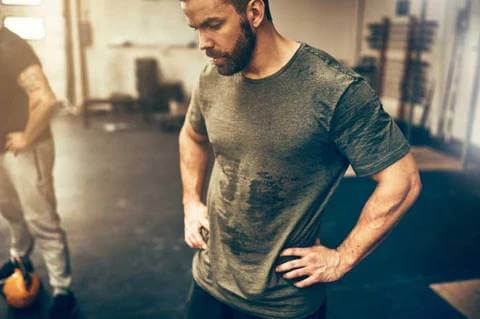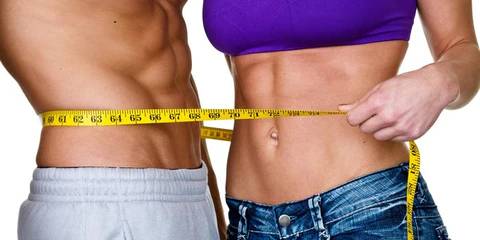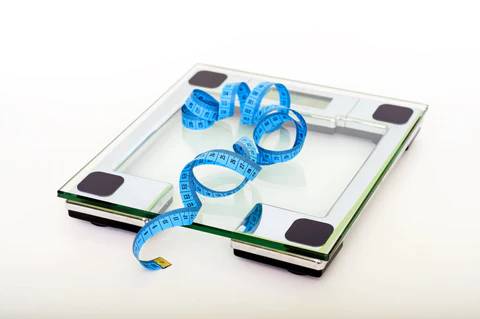Body composition is the proportion of lean body mass to fat mass in the body; mostly referred to as a person’s body fat percentage. A common misconception is that this can be manipulated through training, weight loss supplements, apparel, or topicals alone. While training definitely plays a large role in muscle development, the calories in your diet are second to none regarding weight loss or weight gain.
A calorie, or kilocalorie (kcal), in nutrition refers to the amount of energy that is required to raise the temperature of 1 kilogram of water by 1℃.¹ This metric also measures energy our bodies use throughout the day and take in our diets. The ratio between our calorie intake and expenditure, or “calories in vs. calories out”, explain how weight loss and weight gain occur.

Not all calories are created equal. In a more detailed look, the types of food and where the calories come from in those foods matter. Whole foods are made up of macronutrients, micronutrients, and water. The three macronutrients are carbohydrates, proteins, and fats. Each has their own caloric weight and are necessary for different processes in the body; which highlights the importance of a well rounded diet. There are also differences in how our bodies’ convert these nutrients to energy or store them. Here are the caloric weights of each macronutrient:
- Carbohydrates - 4 calories per gram
- Proteins - 4 calories per gram
- Fats - 9 calories per gram
- Alcohol - 7 calories per gram (no nutritional value and considered “empty calories”)
Micronutrients are the vitamins and minerals that help the body function properly, but they do not provide calories. For the sake of this article, we are simply looking at calories.
Needs Analysis
In order to understand this concept, we must first understand that every person’s body is different. People cannot simply choose to eat the same amount of calories and expect to weigh and look the same. The rate of metabolism, responsible for converting and using energy, is affected by aging, gender, weight, and health. All these characteristics affect the amount of calories needed for the body to function.
- Age - metabolism slows as we age
- Gender - males generally need more calories than females
- Weight - Muscle mass uses more energy than fat mass. The more you have, the more calories you need to maintain that weight.
- Health/Genetic considerations - certain metabolic health conditions affect the metabolism like Diabetes, Hypothyroidism, Grave’s Disease, low testosterone, and more.
These factors are mainly responsible for our bodies’ basal metabolic rate (BMR), also known as resting metabolic rate (RMR). The difference of the two are negligible for this article.
Calorie Expenditure
BMR is the amount of energy, or calories, required to keep our bodies’ functioning at rest. According to the National Academy of Sports Medicine, BMR contributes around 65 to 70 percent of your total daily energy expenditure (TDEE).² The amount of daily physical activity adds to that energy TDEE. Before new innovations like fitness trackers came to market, a person or dietician would rate activity level on scales ranging from sedentary to highly active. This would then be plugged into an equation, along with personal descriptions (influencing BMR) to estimate the TDEE. Thermic effect of food (TEF) is minimal and often overlooked, but is the last contributor to energy expenditure. Driving many claims of “fad diets” nowadays, this concept ties back into what was touched upon above regarding macronutrients and their differences in the body. For example, protein requires more energy for the digestive system to break down than carbs; averaging around 10 percent of TDEE from TEF.[²]

To reiterate, that is diving too deep for the scope of this article and the focus remains on BMR and physical activity as contributions to TDEE. Basically, your personal TDEE is equal to the required amount of calorie intake necessary for your body to maintain its current weight.
Weight loss vs Weight Gain
Now that you have a foundational understanding of caloric intake and energy expenditure, let's take a look at how this affects your weight. Without consideration for macro percentages, your diet must consist of the same amount of calories equal to your TDEE in order to maintain its current weight.

To gain weight, normally desired in the form of muscle mass, you need to eat more calories than your body “burns” per day. This will cause the body to convert the extra calories into fat storage or muscle growth, depending on physical activity levels and types. This is known as an anabolic state. Physical activity will help to use this caloric surplus to fuel muscle development instead of fat storage.
To lose weight, normally desired in the form of fat mass, you need to eat less calories than your body burns per day. This directs your metabolism to begin breaking down its own stores (fat muscle, glycogen) for energy, known as a catabolic state.
For a long time, guidelines suggest the 3,500 calorie rule when attempting to gain or lose weight. Basically, this means that you add or subtract 500 from your TDEE to get your calorie intake per day. The result is a caloric surplus or deficit of 3,500 calories per week, equivalent to 1 pound of body weight.³ Although further research suggests that results are variable, like metabolism; it is still a great place to start in order to grasp the concept.
Risks Associated with Extremes
Yo-Yo Dieting and “Starvation Mode”
Cutting calories in extreme amounts may result in quick initial weight loss, however over an extended period of time the body will switch over to using muscle mass.⁴ ⁵ Imagine being trapped in a desert for a long time. Your body does not know when its next meal will come and goes into “starvation mode”, or “adaptive thermogenesis”. In order to preserve energy, it will save fat mass and break down muscle mass for energy because muscle maintenance requires more energy.
As you know now, muscle influences metabolism and TDEE. A decrease in muscle mass is technically weight loss, but not the kind most people are looking for. Problems don’t just stop there either. When you hit your “goal weight”, your body has already adjusted to the extremely low caloric intake, thus resulting in a slowed metabolism. So unless you plan to starve the rest of your life, you will be eating a surplus of calories when you stop dieting. And that’s where the rapid weight gain (fat mass) comes in. Body weight fluctuates up and down like a yo-yo.
Discomfort, Disorder, and Disease
On the other hand, attempting to gain weight too quickly through excessive daily intakes can also have numerous consequences. In the short term, you may gain some extra fat and muscle, while experiencing some strain on your digestive system. However, a calorie overload for lengthy periods may result in too much excess fat mass. Overweight individuals tend to have higher risk factors for metabolic and cardiovascular disease. In fact, in 2020 the World Health Organization (WHO) stated that “Obesity has reached epidemic proportions globally, with at least 2.8 million people dying each year as a result of being overweight or obese.”⁶
Conclusion
Have a goal and don’t know where to start? It’s true that most of your efforts toward a weight related goal need to start in the kitchen. The calories you eat and the calories you burn is the foundation of any proper diet. Even if you don’t have the money for a dietician, personal trainer, or expensive metabolic lab tests; you can find other ways to dial in your eating habits.

Try one of the numerous tracking apps to help you estimate your TDEE and monitor your intake of calories and macros. This will help grasp how much you are currently eating as well as the nutrients you are lacking. If you find yourself not being able to eat the proper amounts due to time or feeling too full, try supplementing what you need. The goal is to spread your calories over 4-6 balanced meals throughout the day to sustain energy levels and avoid over eating. Also, pay attention to how you look in the mirror as opposed to the numbers on the scale. Water, timing, and density of muscle/fat can influence your weight on the scale. So, it’s best to weigh yourself once a week instead of once a day. Ultimately, you never want to go too quick or too strict with anything or you risk falling off the wagon. Remember, slow and steady wins the race!


